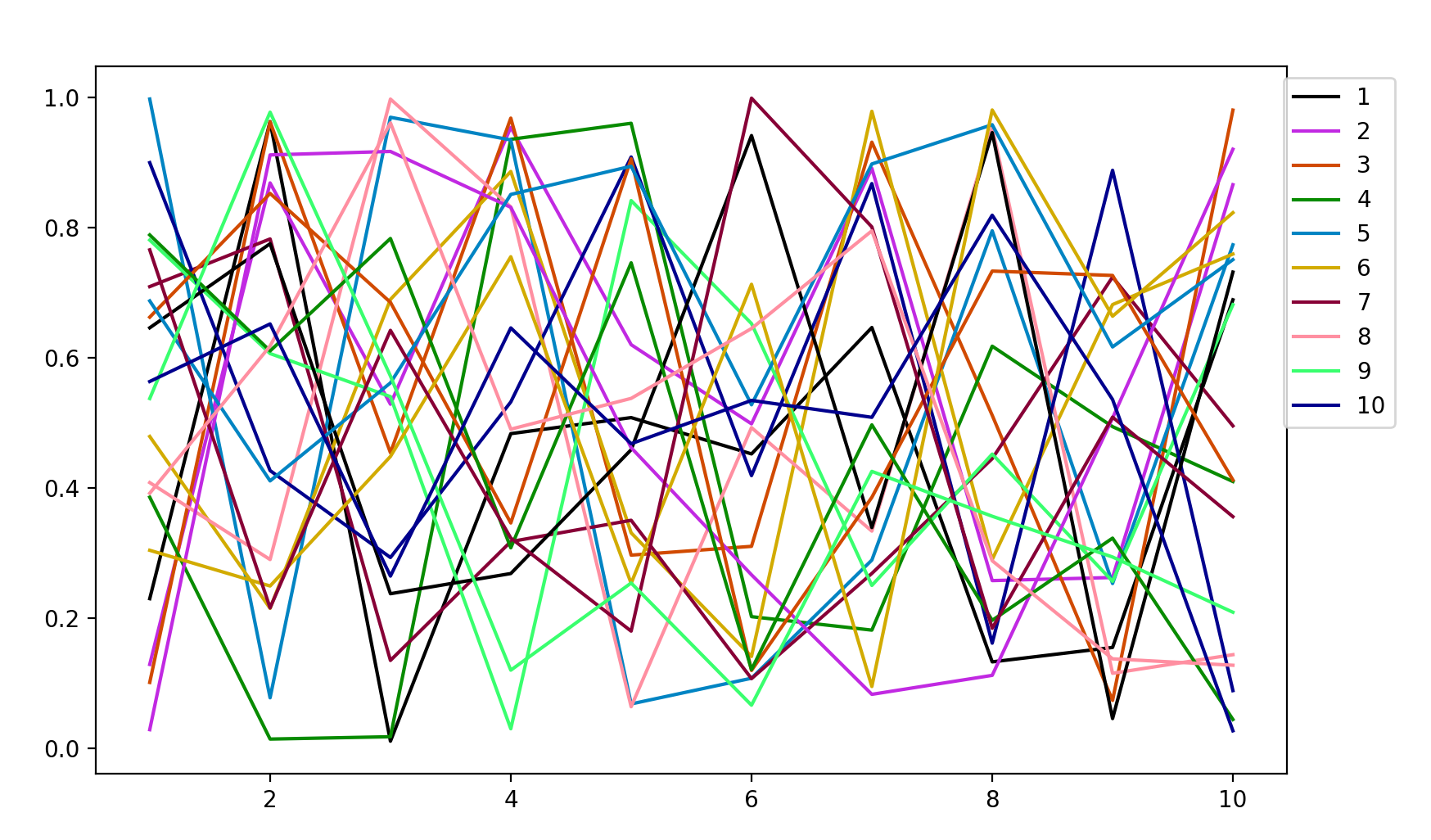Color Scales
Generating distinguishable colors
distinguishable_colors(n::Integer,seed::Color)
distinguishable_colors{T<:Color}(n::Integer,seed::AbstractVector{T})Generate n maximally distinguishable colors in LCHab space.
A seed color or array of seed colors may be provided to distinguishable_colors, and the remaining colors will be chosen to be maximally distinguishable from the seed colors and each other.
distinguishable_colors{T<:Color}(n::Integer, seed::AbstractVector{T};
transform::Function = identity,
lchoices::AbstractVector = range(0, stop=100, length=15),
cchoices::AbstractVector = range(0, stop=100, length=15),
hchoices::AbstractVector = range(0, stop=340, length=20)
)By default, distinguishable_colors chooses maximally distinguishable colors from the outer product of lightness, chroma, and hue values specified by lchoices = range(0, stop=100, length=15), cchoices = range(0, stop=100, length=15), and hchoices = range(0, stop=340, length=20). The set of colors that distinguishable_colors chooses from may be specified by passing different choices as keyword arguments.
Distinguishability is maximized with respect to the CIEDE2000 color difference formula (see colordiff in Colorspaces). If a transform function is specified, color difference is instead maximized between colors a and b according to colordiff(transform(a), transform(b)).
Color arrays generated by distinguishable_colors are particularly useful for improving the readability of multiple trace plots. Here's an example using PyPlot:
using PyPlot, Colors
vars = 1:10
cols = distinguishable_colors(length(vars)+1, [RGB(1,1,1)])[2:end]
pcols = map(col -> (red(col), green(col), blue(col)), cols)
for i = 1:length(vars)
plot(1:10, rand(10), c = pcols[i])
end
legend(vars, loc="upper right", bbox_to_anchor=[1.1, 1.])
To ensure that the generated colors stand out against the default white background, white (RGB(1,1,1)) was used as a seed to distinguishable_colors(), then dropped from the resulting array with [2:end].
Colors.distinguishable_colors — Function.distinguishable_colors(n, [seed]; [transform, lchoices, cchoices, hchoices])Generate n maximally distinguishable colors.
This uses a greedy brute-force approach to choose n colors that are maximally distinguishable. Given seed color(s), and a set of possible hue, chroma, and lightness values (in LCHab space), it repeatedly chooses the next color as the one that maximizes the minimum pairwise distance to any of the colors already in the palette.
Args:
n: Number of colors to generate.seed: Initial color(s) included in the palette. Default isVector{RGB{N0f8}}().
Keyword arguments:
transform: Transform applied to colors before measuring distance. Default is the identity; other choices includedeuteranopicto simulate color-blindness.lchoices: Possible lightness values (defaultrange(0,stop=100,start=15))cchoices: Possible chroma values (defaultrange(0,stop=100,start=15))hchoices: Possible hue values (defaultrange(0,stop=340,start=20))
Returns: A Vector of colors of length n, of the type specified in seed.
Generating a range of colors
The range() function has a method that accepts colors:
range(start::Color; stop::Color, length=100)
Generates n colors in a linearly interpolated ramp from start to stop, inclusive, returning an Array of colors.
julia> c1 = colorant"red"
RGB{N0f8}(1.0,0.0,0.0)
julia> c2 = colorant"green"
RGB{N0f8}(0.0,0.502,0.0)
julia> range(c1, stop=c2, length=43)
43-element Array{RGB{N0f8},1} with eltype RGB{FixedPointNumbers.Normed{UInt8,8}}:
RGB{N0f8}(1.0,0.0,0.0)
RGB{N0f8}(0.976,0.012,0.0)
RGB{N0f8}(0.953,0.024,0.0)
RGB{N0f8}(0.929,0.035,0.0)
RGB{N0f8}(0.906,0.047,0.0)
⋮
RGB{N0f8}(0.094,0.455,0.0)
RGB{N0f8}(0.071,0.467,0.0)
RGB{N0f8}(0.047,0.478,0.0)
RGB{N0f8}(0.024,0.49,0.0)
RGB{N0f8}(0.0,0.502,0.0) Weighted color means
weighted_color_mean(w1::Real, c1::Color, c2::Color)
Returns a color that is the weighted mean of c1 and c2, where c1 has a weight 0 ≤ w1 ≤ 1.
julia> weighted_color_mean(0.5, colorant"red", colorant"green")
RGB{N0f8}(0.502,0.251,0.0)Colors.weighted_color_mean — Function.weighted_color_mean(w1, c1, c2)Returns the color w1*c1 + (1-w1)*c2 that is the weighted mean of c1 and c2, where c1 has a weight 0 ≤ w1 ≤ 1.
Most saturated color
MSC(h)
Returns the most saturated color for a given hue h (defined in LCHuv space, i.e. in range [0, 360]). Optionally the lightness l can also be given, as MSC(h, l). The function calculates the color by finding the edge of the LCHuv space for a given angle (hue).